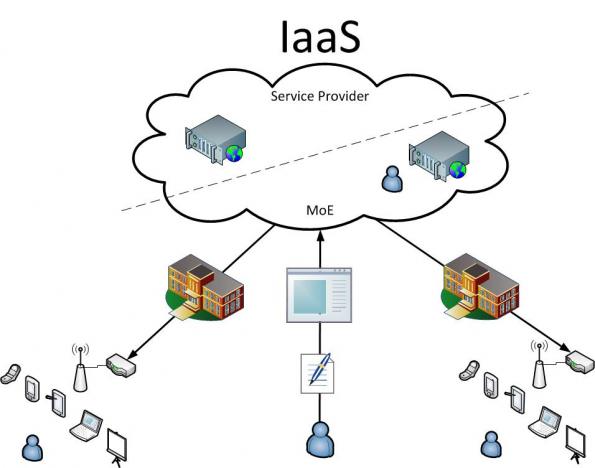Cloud computing is a term which almost rolls off the tongue in businesses these days, however not everybody will be well-versed in some of the freshly-coined nomenclature that comes with it. Here we take a look at 5 terms you’ll need to be on top of to consider yourself a savvy cloud-head – but this is really just the tip of the iceberg.
Highlights of Contents
1. IaaS

IaaS, or infrastructure as a service, is the virtual delivery of computing resources, and the most straightforward way of delivering cloud services. Hardware, networking and storage services can all be delivered using IaaS, and function as a rented service for companies, meaning they don’t have to install and maintain their own data centres. IaaS also works to a consumption-based model, allowing for the per-use basis that makes infrastructure services on the cloud so cost effective. Whether being used for data backup, as a resource for a temporary development project, or for disaster control, IaaS allows you to scale your usage up and down depending on the circumstances. We could go into minute details about the services and licensing details associated with IaaS, however this basic outline captures its essence: the rented infrastructure service from a remote data centre which saves you time and money installing hardware, and allows you to alter the size of your service (and therefore the size of your payments).
2. SaaS
Software as a service, or on-demand software, is a software delivery model, used when software and related data are hosted centrally on the cloud. Many business applications have begun to work SaaS into their respective models, primarily to take advantage of its collaborative functionality, its security, and its significant reduction of on-site costs. Basically, hardware and software maintenance is outsourced to the SaaS provider, reducing costs for the company using the SaaS services, and allowing for a centralized and secure location for data to be stored online.
3. PCI Hosting
PCI (payment card industry) hosting is a fairly simple idea: the ability of a website to process payments. However, the installation and maintenance of completely secure and stable PCI hosting methods is not as simple. PCI standards exist to ensure that companies which store, transfer or process credit card information do so in a secure way, to guarantee that customers’ information is protected. Therefore PCI compliance is absolutely essential to being an effective PCI host, as well as maintaining your position as a stable and reliable business: if you can’t protect the information of your customers, how can you possibly protect your own?
4. Public/private clouds
To make things more confusing, there are several different types of clouds which you can operate with, depending on your business model. Public clouds are the most commonly used, as their resources are made available to the general public by a particular provider, such as Microsoft or Google, which oversees and manages its own services. Private clouds, on the other hand, are operated for a single organisation, and can be managed either internally or by a third party, and can be hosted either internally or externally. Private clouds require a significant amount of engagement and re-evaluation of business strategy to be used effectively, and also tend to pose more vulnerability to corruption than do public clouds. There are also hybrid clouds and community clouds, which combine aspects from both public and private to suit particular needs.
5. On-demand service
It’s as good as it sounds. One of the truly brilliant things about cloud computing is the onus put on users to research, obtain, configure and deploy cloud services without having to rely heavily on IT. Using cloud service catalogues, users are able to access cloud computing templates created by infrastructure vendors, which in turn allows the user to set up their own cloud services. All of the technical aspects of cloud configurations are located within these pre-set templates, so a user can literally get on-board with cloud computing with the push of a button. At the risk of sounding like an old-school nerd, it’s pretty damn neat.
Rob Johnson is a media graduate and freelance writer with a love for cloud computing. Whether it’s updating a travel itinerary with friends on Google Docs or making the most of PCI Hosting with his overburdened credit card, he likes the way this whole cloud thing is going.